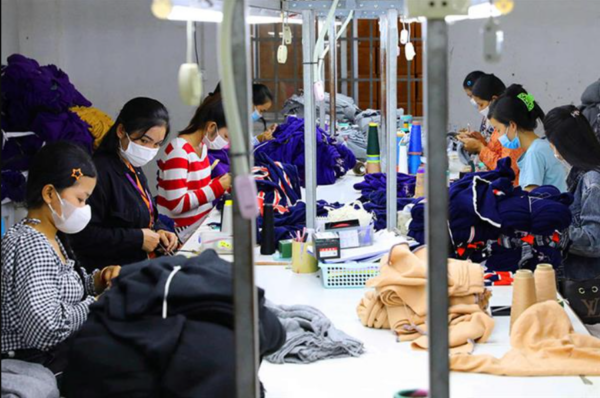
Many labor-intensive Chinese exporters have developed substantially in recent years thanks to the increasing demand for their products.
Ma Yao, CEO of a trade firm in Jiangsu province that exports shoes and boots, said, “Things were much better in the first quarter than last year, and it is our conservative estimate that we’ll be able to increase turnover by at least 50 percent.”
Ma told Yicai Global that this is due to the company’s initiative to expand into the same category as well as the accumulation of many new clients over the past two years due to popular products like fur slippers.
Ma also noted that going forward, the company intends to remain adaptable in order to satisfy the fluctuating needs of the market.
Foam injection molding rain boot production base in Quanzhou, Fujian province, has been extremely active because to the recent success of Big Red Boots on the Ali International marketplace.

General Manager Zhao Xiadi of Quanzhou-based Beijing Diamond Sport International Trading said that the company had previously focused on producing waterproof footwear, but that they had quickly combined fashion elements to redesign, adjusted the molds, and begun a trial run in the Chinese market just last month.
To this day, “feedback from domestic sales remains good,” Zhao said, adding that the overseas market is still in its infancy.
With the help of big data, Zhao was able to act swiftly during the outbreak. In 2020, the firm rebranded its most popular product category—cargo shoes—as boots designed to ward off pandemics. The shoes were a worldwide success, with individual orders totaling over 10,000 pairs.
According to Zhao, the company generated about CNY20 million (USD2.9 million) from the export of pandemic preventive boots in less than half a year.
The ability to swiftly identify and incorporate trending components is crucial to the success of businesses that rely on flexible production.

According to Qin Fen, head of Ali International Station’s industrial and merchant business department, digitalization has become a basic capacity of China’s supply chains, including those for apparel, footwear, and accessories. Generally speaking, sales of individualized goods tend to be more lucrative.
According to customs data, exports of footwear products and components were USD13.19 billion in the first quarter, down 4.9% from the same period a year prior. The export of goods that require a lot of human effort, such as bags and clothing, increased by 5.7% year-over-year.
